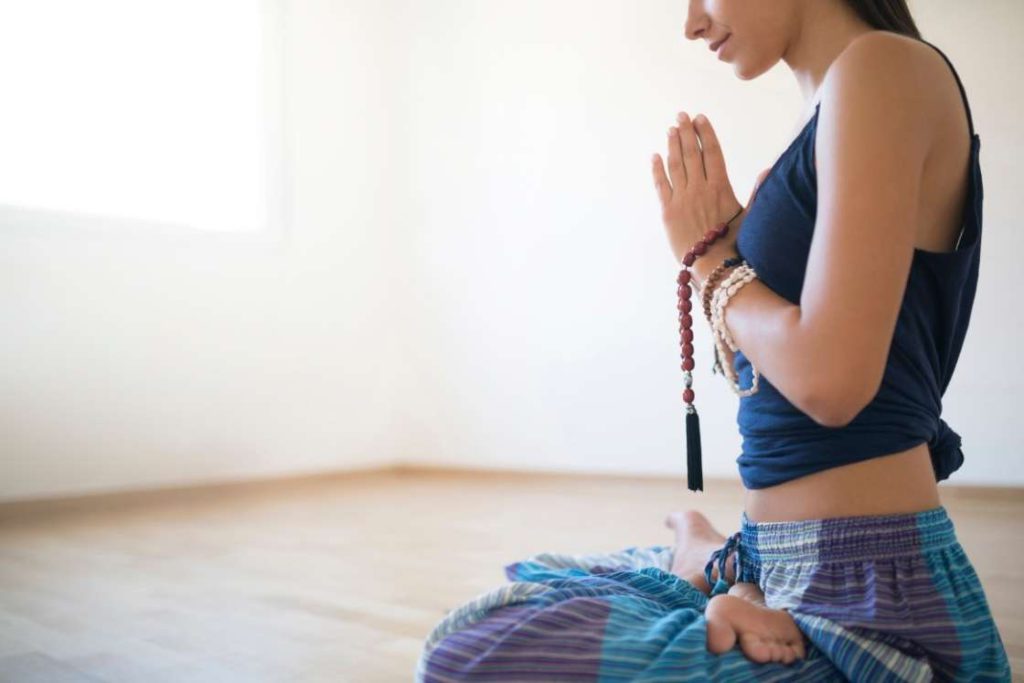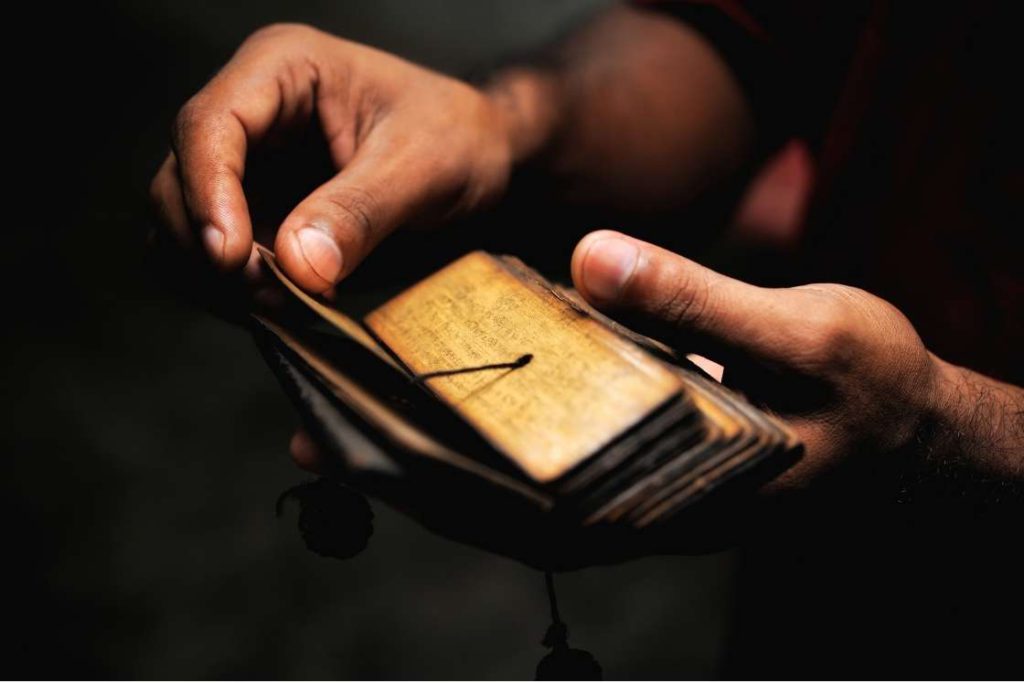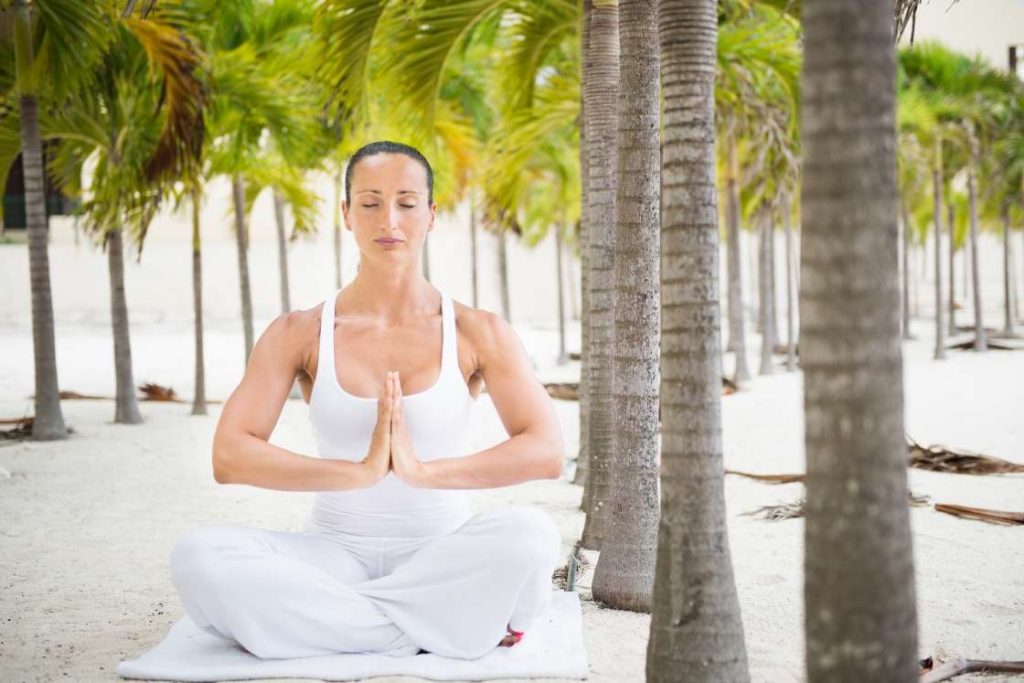Y
Yogi Ashish
Guest
- Definition
- Origin
- Parts of Mantra
- Mantra Yoga Limbs
- How to practice
- Mantra Chanting Types
- Mantra Yoga Benefits

Image: Canva
Mantra Yoga is the practice of chanting sacred sounds, words, or verses to focus the mind and awaken higher consciousness. In Sanskrit, “man” means mind and “tra” means tool or vehicle, making the mantra a powerful instrument to guide mental energy.
Through regular chanting, practitioners harmonize their body, mind, and spirit, cultivating inner peace, clarity, and a deeper connection with the supreme consciousness.
What is mantra yoga?
Mantra Yoga is one of the six classical branches of yoga, focusing on the chanting of sacred syllables, verses, or Vedic hymns to attain inner control and higher states of consciousness, particularly the yoga limb of Pratyahara (withdrawal of the senses). Like all branches of yoga, its ultimate aim is self-realisation and spiritual liberation.
The term “Mantra Yoga” combines “Mantra” (a tool or sound to focus the mind) and “Yoga” (union with the supreme consciousness). Together, they form a practice designed to harmonise mind, body, and spirit.
Through disciplined chanting and repetition, the wandering mind becomes steady, allowing the practitioner to deepen meditation, connect with higher consciousness, and align fully with the intentions of yoga.
Origin of mantra yoga
Mantra Yoga finds its roots in the Vedas and Tantra, with its earliest teachings mentioned in the Rig Veda. In fact, some scholars suggest that yoga first developed through the practice of mantra chanting.
More than just a spiritual ritual, Mantra Yoga embodies a profound science passed down by the enlightened sages of Sanatana Dharma. Each mantra or hymn carries a unique vibration that resonates with universal consciousness, guiding the practitioner toward inner divinity and higher awareness.
While Mantra Yoga originated in Hinduism, its practice has also been embraced by Buddhism and Jainism as a means to attain enlightenment.
The repetition of sacred syllables or verses, known as Japa, deepens concentration and strengthens the effects of the practice. Because of this, Mantra Yoga is often referred to as Japa Yoga, highlighting the central role of consistent mantra chanting in spiritual progress.
The elements

Image: Canva
Mantra Yoga is incomplete without understanding the essential elements of a mantra and the 16 limbs of the practice. These form the foundation for its successful implementation and spiritual benefits.
1. Parts of mantra
The five basic requirements of a Mantra are described below that include Rishi (Seer), Chhanda (meter), Devta (deity), Bija (seed), and Tattva (element).
- Rishi (Seer) – The seer or sage is the ancient spiritual teacher who discovered the mantra for the first time by hearing or realizing the sounds in higher consciousness. The sage then becomes a medium who passes the mantra to further followers in the world.
- Chhanda (meter) – A meter is something that describes the pronunciation, rhythm, and the way of recitation to please the deity associated with that mantra. Hence every mantra is prepared traditionally with a specific meter associated with it.
- Devta (deity) – Each mantra has a specific deity presiding over it who is called upon through the chanting. The practitioner by chanting the mantra attracts and assimilates the consciousness and qualities of the presiding deity.
- Bija (seed) – Bija is an essence of the mantra which grants special power to it. It is the seed of a mantra that enables the stimulation of the energy centers located in the human body. Therefore, bija is an essential element to see the fruition of the mantra.
- Tattva (element) – An element is a key to unlock the intended results behind the mantra. It can be understood by the fact that every mantra possesses the nature of a five-elements and one of 3 gunas (such as Sattva, Rajas, and Tamas).
2. Limbs of mantra yoga
Just like in Patanjali’s Yoga there 8 limbs which lead to Samadhi, there are 16 limbs of Mantra yoga knowing which is essential to get fruitful results from this practice.
The 16 limbs of mantra yoga are – Bhakti, Shudhi, Asana, Panchang Sevan, Achara, Dharna, Divyadesh Sevan, Prana Kriya, Mudra, Tarpana, Havan, Bali, Yaga, Japa, Dhayana, and Samadhi.
A clear idea describing all the limbs are given below to make the concept easier for the practitioner, so let’s begin:
- Bhakti – The foremost aspect of mantra yoga is having faith or devotion in the practice, that’s what bhakti denotes. It is impossible to manifest mantra yoga without having complete and unshakable faith over the practice.
- Shudhi – Shudi refers to purification, which in yoga mantra means internal cleansing of body, mind, and spirit. Also, the place dedicated to the practice and the intention behind it must be pure as well.
- Asana – Asana refers to the posture that the practitioner attains while practicing mantra yoga. It also denotes the seat on which the yogi sits like woolen, kusha, Resham, Mriga-charma, baghambar, blanket, etc. are considered preferable stuff to sit on.
- Panchang Sevan – It is the collection of Gita, Sahasranam, Stuti, Kavach, and Hridayanyas.
- Gita is the sacred text which is sung or taken excerpts from to chant.
- Sahasranam is experiencing the vastness of the supreme soul.
- Stuti refers to worshipping and associating the supreme being with the heart.
- Kavach denotes protection from the hurdles that are achieved by sadhana.
- Hridayanyas is entering the mysteries of the mantra through the heart.
- Achara – It shows the conduct of the practitioner behind the practice. It must have significant moral values and away from any bad influence.
- Dharana – This limb is about the concentration of the mind in the present moment.
- Divyadesh Sevan – It is about developing self-identification during the practice. It is achieved by establishing Prana Shakti (Energy) in 16 vital points of the body during the yoga mantra.
- Prana Kriya – The practice of regulating the breath by getting control over inhalation, retention, and exhalation is known as Prana Kriya or Pranayama.
- Mudra – It is the hand gesture describing devotional, aesthetic, emotional, or psychic attitude while chanting.
- Tarpana – It represents the libation or offering special ingredients, flowers, etc. to please the deity.
- Havan – This is the offering to the deity by burning the fire of Yagya, which represents feeding the lord in fire form. Mantra yoga cannot complete without Havan.
- Bali – Bali refers to sacrifice or surrender of negativity which are beyond control. It is performed by sacrificing evils like pride, lust, anger, and any other evil habits and practices.
- Yaga – This limb is about worshipping the deity wholeheartedly.
- Japa – It refers to repeated chanting of mantra as whispered, vocalized, or mental repetitions. Generally, a Mala with 108 beads are used to keep track of the rounds in Japa. Japa Mala could be of tulsi, rudraksha, rakta-chandan, shweta chandan, and crystal. It is used to keep the mind anchored to the practice.
- Dhyana – Higher and deeper state of concentration is meditation or dhyana, Here, it refers to image meditation, where the aspirant must be able to get a glimpse of the Lord on the third eye with closed eyes.
- Samadhi (trance) – Samadhi is the state of complete absorption of self with the supreme self. In this state, the practitioner realizes the eternal self aka akhand swaroop in Sanskrit.
How to practice mantra yoga?

Image: Canva
To practice mantra yoga, the important step is to draw honesty (Satya) into the practice that signifies the dedication of the practitioner.
Another thing that has to be there before starting the chant is to surrender in the mantra which can be done by trusting in the practice. It is the faith in the practice that leads to the intended results which seem far beyond one’s potential.
After honesty and faith within yoga mantra, the following procedure can be followed to implement the practice:
- Find a comfortable place that is away from any distractions or disturbances to practice seated meditation.
- Choose your mantra and then sit quietly for a moment contemplating your intentions with a conviction.
- Inhale deeply and then...
Please login to view full content. Log in or register now.
